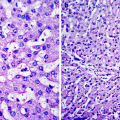and LI Ning2
(1)
Radiology Department, Capital Medical University Beijing You’an Hospital, Beijing, China, People’s Republic
(2)
Capital Medical University Beijing You’an Hospital, Beijing, China, People’s Republic
Abstract
The swine flu pandemic plagued Mexico in March 2009, which spread all over the world rapidly. The World Health Organization (WHO) initially called it as “swine flu”. On Apr. 30, 2009, WHO, United Nations Food and Agriculture Organization (UNFAO) and World Organization for Animal Health reached an agreement to replace “swine flu” with influenza A (H1N1) [1, 2].
1.1 The Nomination of Influenza A (H1N1)
The swine flu pandemic plagued Mexico in March 2009, which spread all over the world rapidly. The World Health Organization (WHO) initially called it as “swine flu”. On Apr. 30, 2009, WHO, United Nations Food and Agriculture Organization (UNFAO) and World Organization for Animal Health reached an agreement to replace “swine flu” with influenza A (H1N1) [1, 2].
The Ministry of Health in China claimed the disease to be “type Jia H1N1 influenza”. The deputy director, Mr. Wei-zhong Yang, of the Center for Disease Control (CDC, Beijing, China) told reporters on May.1, 2009 that type Jia was equivalent to A, which was in agreement with the international nomination but Jia was more Chinese according to Chinese customs sorting.
The virus triggering the pandemic in Mexico and America is called H1N1 virus, which is a subtype strain of influenza A virus. The strain, containing the gene segments of swine flu, bird flu and human flu, is a newly emerging swine flu virus and can spread from person to person. After more than half a year, Influenza A (H1N1) can infect animals like swine. WHO announced to define the present pandemic as Influenza A (H1N1), instead of swine flu from Apr.30, 2009.
1.2 The History of Influenza A (H1N1) Pandemics
On Apr. 15, 2009, the first case of Influenza A (H1N1) in the United States was definitively diagnosed by laboratory tests. It was made clear that the spread from person to person is possible. On Apr. 22, the government of the United States announced it a case of public health emergency and responded with the implementation of a national plan.
CDC of the United States and WHO reported the disease on their own official websites on Apr. 23 and 24, 2009, respectively. The flu was reported to be caused by a new virus containing rare complexes of gene segments, which had never been found in the United States or elsewhere in the world. Within a few days after its outbreak, WHO defined the flu as an international emergency of public health.
Stay updated, free articles. Join our Telegram channel

Full access? Get Clinical Tree




